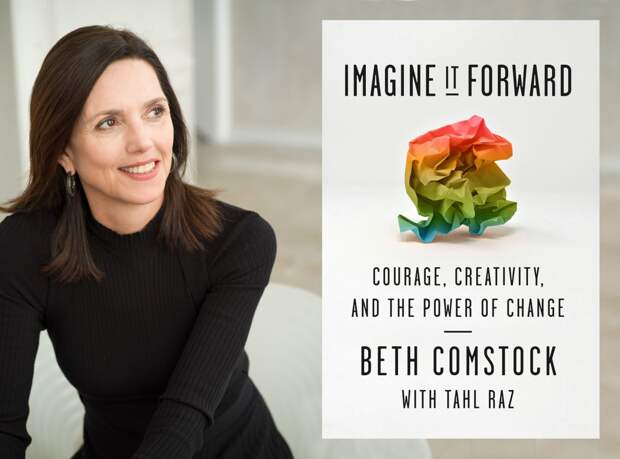Author: Dave Benton / Source: 99U by Behance

In this interview about her new book Imagine It Forward, Beth Comstock discusses how we can use our imagination to redefine our roles, how we can scale new ideas across organizations, and why creativity will be a key job skill in the years ahead.
Beth Comstock wrote Imagine It Forward for one pressing reason.
“We need more people in our organizations who are leading with imagination,” she says.It’s a call to action any creative can agree with. As the machine mind squeezes imagination out of our organizations, we’ve all got to partake in a creative revolution. “The future depends on it,” says Comstock.
Imagine It Forward is about more than navigating organizational change. Comstock shares her personal career story, as she rises from leading NBC’s corporate communications department to becoming GE’s Chief Marketing Officer, then, ultimately, GE’s Vice Chair. One theme throughout is Comstock’s “job crafting”—taking on new responsibilities in current roles that paved the way for her to take on the next role. “I’ve done it in almost every job I’ve had because I am curious,” she says. “My best example is when I went into marketing at GE.”
At GE then, marketing was seen as what you do at the end of a product cycle. “A group of us thought marketing is also what you do at the beginning,” says Comstock. “It’s about living in the market. And from there, marketing became my entrée into the world of innovation, of understanding the revenue model, and it opened up a whole new world.” The experience led to a redefinition of “marketing” for Comstock.
It became as much about the insight function, as the stories told at the end.In this interview, Comstock discusses how we can use our imagination to redefine our roles, how we can scale new ideas across organizations, and why the future will be drafted by creators.
***
Can you share some insight into the title Imagine It Forward. What do those words mean and how do they frame your story?
I feel some of what’s missing is imagination in the workplace, visibility to think ahead to new futures, and then make it happen. It’s that simple. After having spent several decades working across multiple industries this was my mission to help unlock imagination. I am trying to refine it to be creative problem solving, the ability to think ahead. To me, that’s a rallying cry, certainly from my time in business.
I would need to make myself into someone who belonged, yet was able to be independent enough to rebel without getting fired.
What have you learned about injecting creativity into companies?
In the book, I call out the “imagination gap,” which is where possibility and options for the future get stuck or go to die. We want certainty in our organization. We actually believe that, in many cases, we can eradicate risk. And it’s actually the opposite. As somebody who spent my whole career trying to unlock imagination and think about creativity at work, I think we have to recognize that we’re not encouraging it, so we need to find people who are good at that and make room for that. It’s about a shift in mindset.
In the technical companies where I tended to work, people were very creative. But I think they called it something else. Or they did it in their spare time. They went home and created things, but when they came to work, they thought they had to know all the answers.
So how do you do it? You have to say, “This is priority here.” You have to give people the freedom. And foremost it’s the issue of building trust and allowing people to try things because with more creative endeavors, with a lot of experimentation, not everything works. People have to have space to not get it right as well.
One of my biggest learnings in my career is that often in companies we hold the long-term and the short-term to the same metrics. Don’t do that.
You have a great quote in the book when you talk about joining GE: “I would need to make myself into someone who belonged, yet was able…
The post Beth Comstock: The Future is for Creatives appeared first on FeedBox.